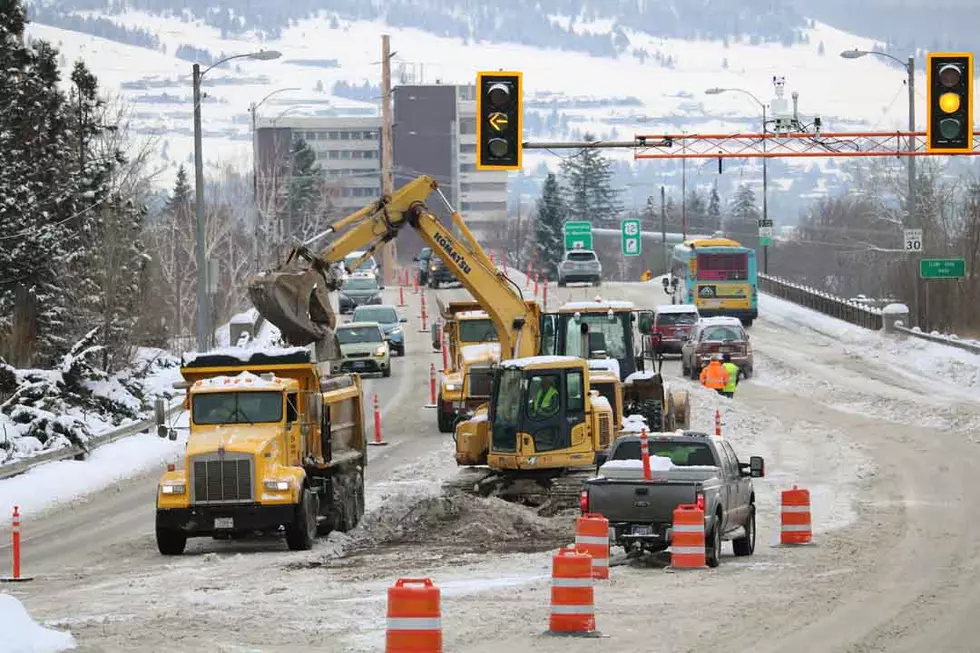
Montana’s federal infrastructure allocation still an open question
Montana, like other states, stands to gain billions of dollars from the recently signed federal Infrastructure Investment and Jobs Act, a $1.2 trillion bill that emerged as one of the top legislative priorities of the new presidential administration.
But state officials here are anxiously awaiting more — or in some cases, any — information on how the various pots of money in the bill can be spent, and when exactly they’ll become available.
“We don’t know what we don’t know yet,” said Amy Sassano, deputy budget director with the Governor’s Office of Budget and Program Planning at a meeting of a legislative interim budget committee Wednesday. “Although the agencies do have some information … there’s a whole bunch that we don’t know as far as the amount of money we’ll get and what the rules and guidance will be on how we can spend that money.”
Much like the American Rescue Plan Act and other federal coronavirus aid packages that sent hundreds of millions to individual states, the approval of the spending package doesn’t mean that money becomes immediately available. For one, much of that money still needs to be appropriated. Beyond that, the feds need to draft and release rules and guidance that delineate the allowable usages for the infrastructure dollars, a process that could take months.
And while the U.S. Department of the Treasury was responsible for issuing guidance on ARPA, the breadth of the infrastructure bill is such that agencies across the federal government will be involved.
“Unlike ARPA, where you have one federal agency promulgate an interim final rule, this law captures so many other departments across the federal government,” said Amanda Kaster, director of the Montana Department of Natural Resources and Conservation, at Wednesday’s meeting of the legislative long-range planning interim budget subcommittee. “What you’re likely to see are a whole lot of agencies who have to promulgate their own rules.”
Montana budget officials said that so far, they know the state is guaranteed $3.7 billion in minimum grants and allocations from formulae that are already set in law. But that’s likely just a fraction of all the money the state will get once the process continues, and much of that guaranteed chunk comes in the form of programs that have been previously authorized.
However, contained in even that fractional sum are numerous possibilities. For example, based on existing formula funding, Montana is set to receive $2.8 billion from the Federal Highway Administration for roads and an extra $225 million for bridge repair and replacement. In another pot, there’s at least $100 million for broadband projects, in addition to the already substantial sum that the state is set to invest in connectivity thanks to ARPA.
Meanwhile, $63 million from the Environmental Protection Agency’s state revolving fund will support Montana water projects such as replacing lead pipes in schools and other public buildings and addressing contamination from chemicals like PFAS.
Other water and natural resource-related funds are available, though still a little up in the air. A chunk of the bill is devoted specifically to western waterways, with $100 million available for addressing critical failures in waterworks. The state is likely to apply to use a chunk of that money to address the St. Mary Canal drop failure, Kaster said.
In the background, Montana still hasn’t spent — or even received — all of its state allocation from the American Rescue Plan Act, money that’s trickled out through a series of advisory commissions formed to guide the executive’s spending decisions. That second, roughly $405 million half of Montana’s allocation is expected midway through 2022.
One question has been answered, however. While the possibility of a special session to handle infrastructure dollars was the subject of whispers in the Capitol this session, Sassano assured lawmakers Wednesday that wouldn’t be needed.
“There is no need for a special session for these funds,” she said.
